Contents
Food from private farms is the best option for people who care about their diet. Homemade eggs and meat are much tastier, and, most importantly, healthier than store-bought. Nowadays, animal breeding has become more accessible, because it is not necessary to build expensive wooden or stone chicken coops to keep birds. An excellent alternative to traditional flocks is a polycarbonate chicken coop. In addition, the construction of a polycarbonate building will cost less than wood or stone.
Many owners of private farms have covered greenhouses or polycarbonate greenhouses on their site. The experience of farmers and breeders suggests that such structures are great for keeping poultry.
Benefits of polycarbonate
The basis of polycarbonate is polymer compounds, thanks to which the material is durable and frost-resistant. Polycarbonate has a wide range of colors: from translucent to saturated shades. Polycarbonate is available in the form of flexible sheets of various thicknesses.
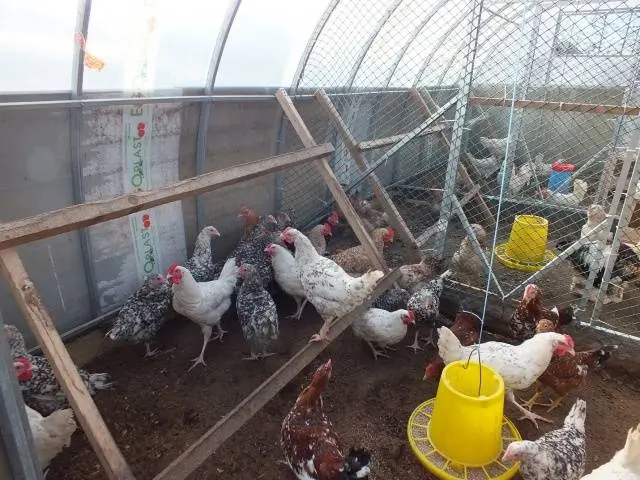
Despite their small size, polycarbonate chicken coops perfectly protect the bird from bad weather and predators. However, keeping chickens in the winter season has its own characteristics. The winter chicken coop should be equipped with:
- ventilation
- lighting fixtures;
- warm floor.
If the chicken coop is equipped from a polycarbonate greenhouse, it is pre-cleaned. The internal space of the future chicken coop is freed from debris, weeds and tools.
Arrangement of a chicken coop
The next step in improving the chicken coop is the construction of poles and perches (see photo below).

In addition to the standard “furniture”, chickens need feeders and drinkers, they are installed away from the exit. After assembling the perch of the house, a warm floor is made. Sawdust, straw or hay are optimal for him. The last two materials are preferable, as they do not harm the digestive system of chickens.
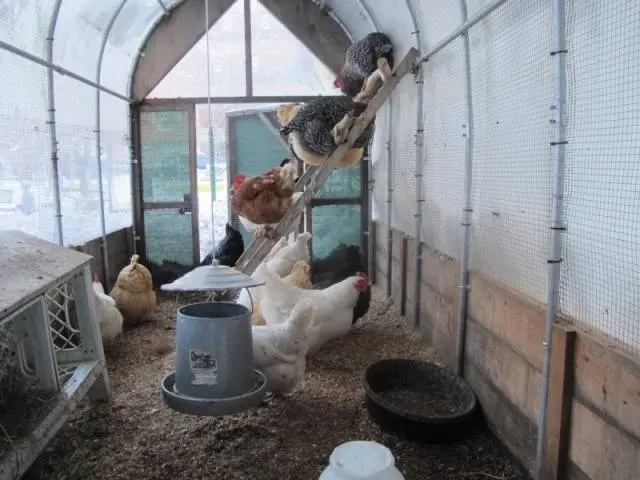
A comfortable temperature for chickens is +10 degrees. For laying hens, a mode of 15 to 25 degrees of heat is required. Temperatures below zero in a polycarbonate chicken coop are detrimental to poultry. When it gets cold, additional sources of heating are installed in the chicken coop, for example, heat guns, convectors or stoves.
In a small space, chickens create an optimal microclimate for them, which improves egg production. Another way to increase the number of eggs produced by a bird is to build a walking area next to or inside the chicken coop.
A very important component in the home of chickens is light. In summer and spring, the sun is enough, but in winter, the bird needs an additional source of lighting in a polycarbonate structure. To do this, energy-saving lamps are installed in a polycarbonate chicken coop. They have to work 12-14 hours a day. The solar cycle is much shorter in winter, so the lighting in the chicken coop is turned on in the morning and in the evening.
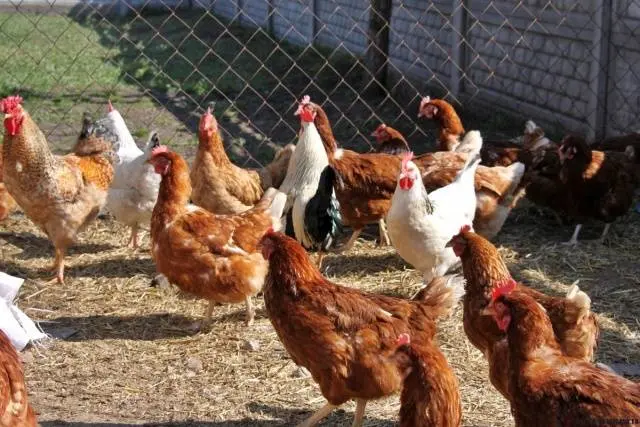
Chicken coop insulation in regions with mild and temperate climates
The floor of the chicken coop is the most vulnerable place for drafts. Therefore, first of all, the foundation is insulated in a flock. If the building stands on a pile or column foundation, it is enclosed with plank shields. The most reliable multi-layer type of insulation. For this, a two-layer fence made of boards is knocked down, and foam plastic or other moisture-resistant insulation is placed between them.
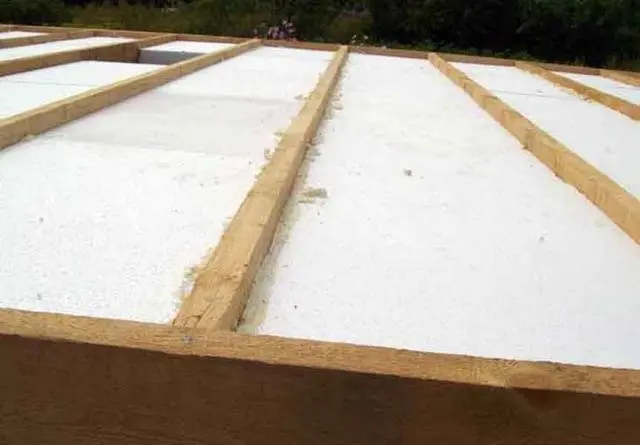
To protect the tape base of the chicken coop, use the following method:
- a trench is made along the perimeter of the foundation;
- Styrofoam wrapped in cellophane is placed inside the ditches;
- the insulation is covered with a waterproofing agent, for example, roofing material;
- the cavities are covered with soil flush with the chicken coop.
The inside of the polycarbonate chicken coop is pasted over with a film and sprinkled with earth. This method of protection is considered very reliable. If winters in your area are very severe, use additional sources of heating.
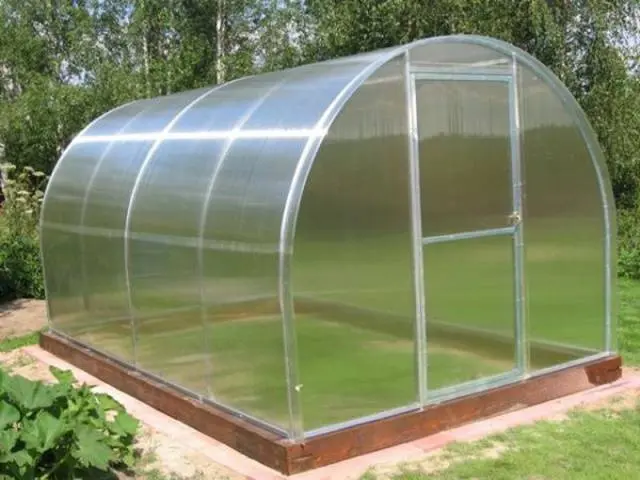
Insulation of a greenhouse-chicken coop in cold regions
At low temperatures, external thermal insulation will not be enough. Therefore, for the winter, water or electric heating is carried out in a polycarbonate chicken coop.
A popular option for heating a flock is underfloor heating. To do this, the soil of the chicken coop is leveled and 10 mm of sand is poured to the bottom. A film is laid on top and laid on non-electric heating cables with a thermostat. To control the temperature, the system is equipped with a relay. Another roll of protective film is laid over the cables and a layer of sand is covered. Chickens spend most of their time on the floor or perch, so underfloor heating is optimal for heating the chicken coop.

The only disadvantage of the cable system is the high cost. However, investments will justify themselves with regular egg production. If the electric heating system seems expensive to you, take a closer look at the water structure. It will require a supply of communications to the chicken coop. But if your site has water supply, this method of heating will be much cheaper.
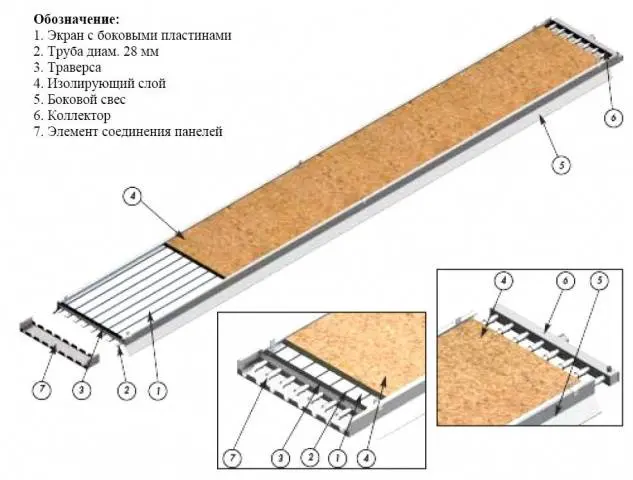
Building a structure with your own hands
To build a polycarbonate poultry house with your own hands, you will need the following tools and materials:
- drill and fasteners;
- a hammer;
- cutter;
- a jigsaw;
- thick wire.
All tools can be easily found in any private household. The building begins to be erected from the frame. It is optimal to use metal for this. For convenience, a wire template is first assembled. The size of the sides of the frame must match the intended parameters of the house. A square is made of wire, with the help of which polycarbonate will be fastened. Similar templates are made for walls and ceilings (an example of a fixture is shown in the photo).
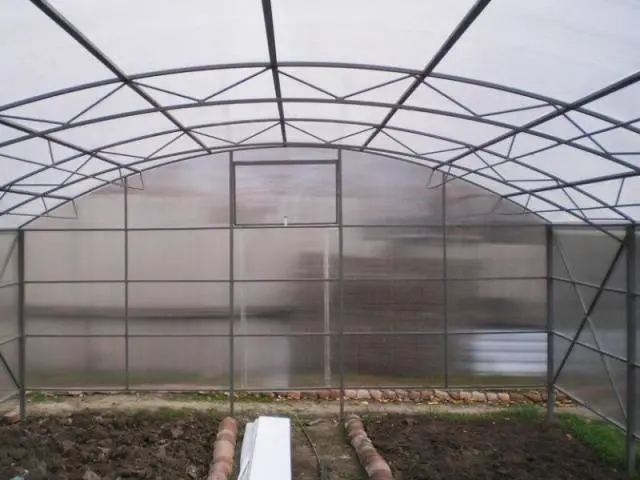
When all the templates are ready, it is necessary to weld the joints of the sides of the future chicken coop. Then proceed to cutting polycarbonate. Finished sheets are inserted into a wire frame and tied with thick threads. When all the sheets are tied to the wire, they are fastened together and installed on the ground or a pre-prepared foundation.
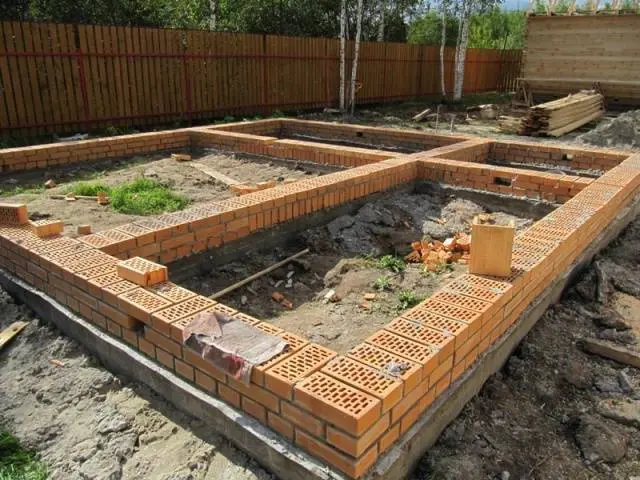
A greenhouse combined with a chicken coop will be an excellent home for a bird. In such a building, birds will be able to winter more than one season. And with high-quality insulation of the chicken coop and arrangement of a perch, you can increase the number of eggs in laying hens.
When arranging a poultry house for chickens and other birds, it is important to remember all the nuances. Chickens are very sensitive to climate, so they require comfortable conditions.









